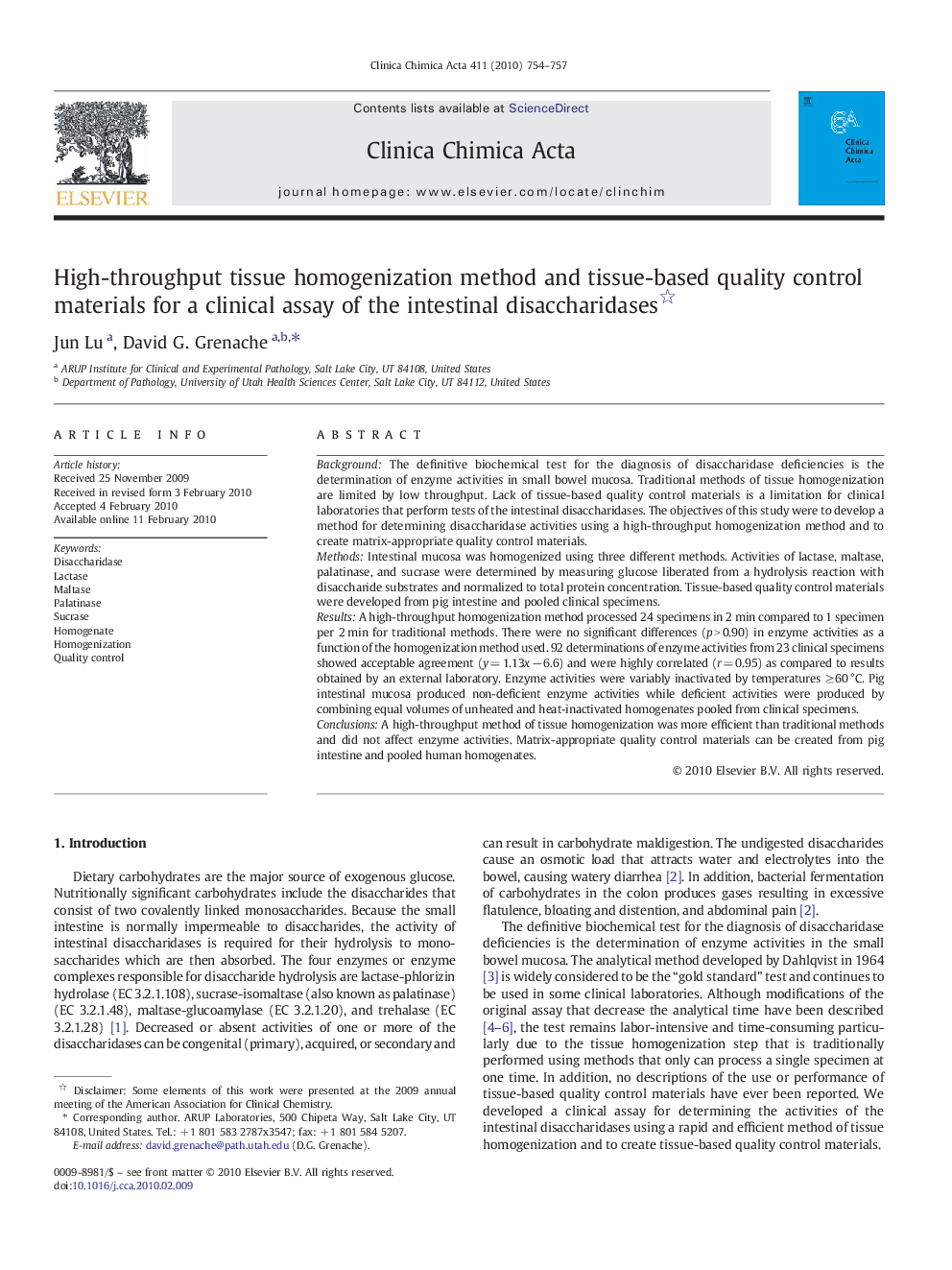| Article ID | Journal | Published Year | Pages | File Type |
|---|---|---|---|---|
| 1967019 | Clinica Chimica Acta | 2010 | 4 Pages |
BackgroundThe definitive biochemical test for the diagnosis of disaccharidase deficiencies is the determination of enzyme activities in small bowel mucosa. Traditional methods of tissue homogenization are limited by low throughput. Lack of tissue-based quality control materials is a limitation for clinical laboratories that perform tests of the intestinal disaccharidases. The objectives of this study were to develop a method for determining disaccharidase activities using a high-throughput homogenization method and to create matrix-appropriate quality control materials.MethodsIntestinal mucosa was homogenized using three different methods. Activities of lactase, maltase, palatinase, and sucrase were determined by measuring glucose liberated from a hydrolysis reaction with disaccharide substrates and normalized to total protein concentration. Tissue-based quality control materials were developed from pig intestine and pooled clinical specimens.ResultsA high-throughput homogenization method processed 24 specimens in 2 min compared to 1 specimen per 2 min for traditional methods. There were no significant differences (p > 0.90) in enzyme activities as a function of the homogenization method used. 92 determinations of enzyme activities from 23 clinical specimens showed acceptable agreement (y = 1.13x − 6.6) and were highly correlated (r = 0.95) as compared to results obtained by an external laboratory. Enzyme activities were variably inactivated by temperatures ≥ 60 °C. Pig intestinal mucosa produced non-deficient enzyme activities while deficient activities were produced by combining equal volumes of unheated and heat-inactivated homogenates pooled from clinical specimens.ConclusionsA high-throughput method of tissue homogenization was more efficient than traditional methods and did not affect enzyme activities. Matrix-appropriate quality control materials can be created from pig intestine and pooled human homogenates.
